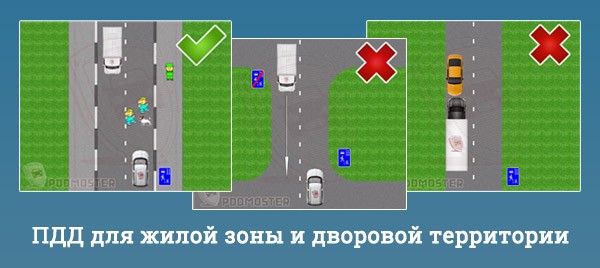
Internal road, residential area and traffic area - what traffic rules apply to drivers?
Content
- Internal Path - Definition
- Brand D-46 and brand D-47 - what do they report?
- Can you drive a car after drinking alcohol on an internal road?
- Residential area - what is it? Do I have to give way when leaving this zone?
- Traffic zone - public or private road? What are the rules in this zone?
- Internal road against residential and traffic area
The internal road is reserved for vehicles, but traffic on it does not mean as many restrictions as in the case of public roads. The residential area and the traffic area are other areas where not all traffic rules apply. Read the text and find out what a driver can afford in such a space, and what rules he still cannot ignore!
Internal Path - Definition
The Law of March 21, 1985 on public roads (in particular Article 8(1)) contains the definition of such a road. An internal road is, among other things, a cycle path, a parking lot or an area intended for the movement of vehicles. This category also includes access roads to agricultural land that are not included in any of the categories of public roads and are not located in the ROW. In other words, this is a non-public road.
Brand D-46 and brand D-47 - what do they report?
An internal road may be accessible to everyone or only to certain persons (for example, roads in closed neighborhoods). It is the manager of a given road who decides who can use it. It is worth noting that it can be labeled, but this is not required. What do the signs indicate? Worth approaching:
- sign D-46 indicates the entrance to the internal road. In addition, it may contain information about the traffic administrator;
- sign D-47 marks the end of the inner road. Remember that when joining the movement, you must give way to other participants.
Rules of the road on an internal road
On an internal road, you can not follow the rules of the road. However, if there are road signs and signals, then you need to obey them. Usually they concern parking. Their absence means that you can leave your car anywhere. It is the owner of the road who determines the rules for driving on the internal road belonging to him. You must adapt to them so as not to pose a threat to vehicular and pedestrian traffic.
Can you drive a car after drinking alcohol on an internal road?
While you can drive on an internal road with your headlights on or your seat belt not fastened, there are no exceptions for driving under the influence of alcohol. You should know that even the security guard has the right to call the police, who will check your sobriety. To avoid safety hazards and high fines, never drive after drinking alcohol.
Residential area - what is it? Do I have to give way when leaving this zone?
What is a residential area and what rules govern movement in it? Its beginning is marked with the sign D-40 with the image of pedestrians. They can use the full width of the road and have priority over cars. Therefore, in a residential area, the driver must move at a speed of no more than 20 km / h and cannot park the vehicle outside the designated areas. The end of this zone is indicated by the sign D-41. When exiting, give way to all road users.
Traffic zone - public or private road? What are the rules in this zone?
Unlike an internal road, the traffic zone is a non-public road, which is subject to the provisions of the Highway Code. If you want to drive on it, you must follow the same rules as on a public road.. These include, among others:
- driving with the lights on;
- ongoing technical research;
- Fasten seat belts;
- driver's license.
The beginning of this section is marked with the sign D-52, and the end of the carriageway is marked with the sign D-53. As a driver, you must follow the general rules of the road, obey the signs and traffic lights. Traffic violations are punished.
Internal road against residential and traffic area
The differences between the inner road, residential area and transport area are significant.
- You must remember that the internal road is not a public road. There are no traffic rules on it - you can park anywhere, but you need to follow the signs set by the owner.
- In residential areas, remember that pedestrians have priority.
- However, in the traffic zone, all provisions of the traffic rules apply.
In each of these directions, you must ensure the safety of both yourself and other road users.
Now you know how to enter a residential area, a carriageway, and an internal road onto a public road. The recipes for each are slightly different, but remembering them shouldn't be a problem. If you follow the above rules, you will definitely not get a fine!
